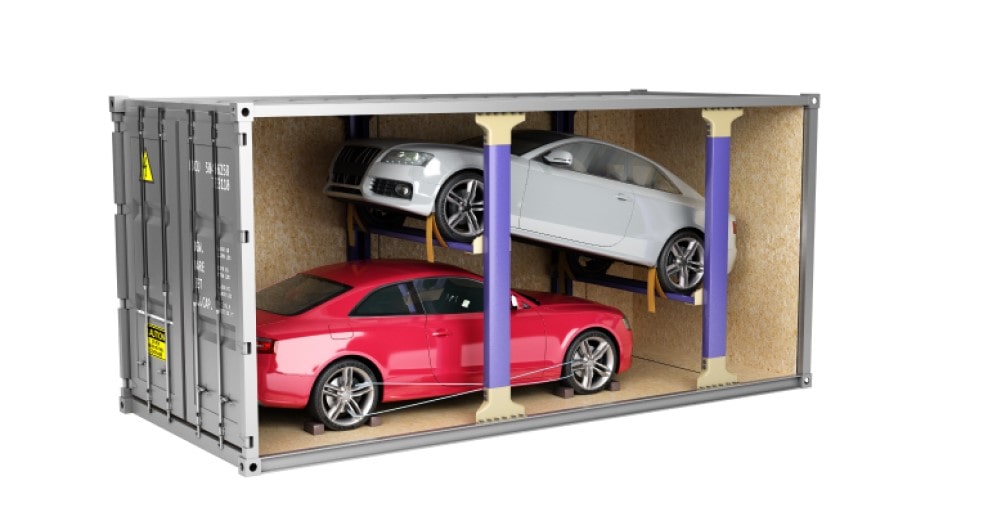In choosing to self-pack a shipping container you have control what goes in and how long it takes to pack the container. It can be a lot less stressful than paying someone else to do it for you. There is an art to self-packing a shipping container, as well as some strict rules you must obey. We’ll look at the most important features in this article.
When it comes to self-packing, the empty container will be dropped outside your home or work site and collected at a pre-arranged time. At the other end it will be dropped at the location and you unpack it yourself.
Do not pack these things!
The first thing to know when it comes to self-packing a container is what items are forbidden and shouldn’t be transported. Here’s the list:
- Guns and weapons
- Flammable substances
- Hazardous substances
- Jewellery
- Spray cans
- Perishable food items
- Plants or seeds – these are likely to die and will cause problems at customs
- Important documents – family records, passports, financial records etc
- Live pets or animals
If these things are on the manifest or are discovered in a random inspection in another country then you will be in trouble. Jewellery is forbidden thanks to the value involved – if it becomes known you have precious things like that within the container then there is a security risk.
Prepare a manifest
For customs clearance and for your own peace of mind, you should list everything that is going into the container. There is paperwork for international export and you should be as specific as possible so the inspectors know exactly what they will find – and won’t always find it necessary to unpack the container to see what exactly is inside!
Even for interstate travel here in Australia you’ll need to know exactly what is going in for insurance purposes, in case something is broken when the container reaches its destination.
How big a container do you need?
A well-packed smaller container is less likely to damage the goods within than a badly packed larger container. Typically the furnishings from a 3-4 bed home will fit in a 6 metre (20ft) container.
If you have greater space requirements, perhaps for exporting goods to another country or state, here at Gateway Container Sales and Hire we can arrange for a range of different sized containers up to a 12 metre (40ft) High Cube.
You can also arrange for a refrigerated (‘reefer’) container for perishable or temperature sensitive goods.
Used or new container?

You don’t always need to use a new shipping container for transporting your goods. An A or B grade used shipping container can take the different weather conditions on a trip to Europe, for example, and still be secure at the other end.
If you are considering buying a used shipping container for a long-distance international move or delivery it is worth noting that you should be able to sell the container at the other end and recoup much of the cost of buying it here in Australia.
Pack boxes well
In many cases you will be using the container to move a load of boxes. If you’re moving home you need to remember that on its journey the shipping container won’t always have a smooth ride – cranes can drop them and the seas can throw them about. That means unprotected stuff could be damaged in transit.
- As a first step, make sure you have good tape that will seal the bottom of the boxes well so when moved about the stuff doesn’t fall out the bottom!
- Pack your crockery and other fragile stuff with tissue paper and or bubble wrap before going in the boxes. Where it comes to books, don’t load them in large boxes as these can be too heavy to carry.
- For other personal effects, pack different things within so the box is full but not deformed. If it can’t move about in the box it is less likely to be damaged.
Before the boxes are shifted into the container, make sure that they are well labelled – ideally with the contents and with the destination room or location at the other end.
Larger items
A household’s gear isn’t always going to fit in a load of cardboard boxes! Furniture and large items such as bikes will need to go in (and be protected) too. Cardboard and old blankets are great to protect these items.
If you can flat-pack the furniture it will be easier to pack too. Again, look at ways of protecting the goods from shifting in transit.
Cars and other combustion engine vehicles

You’d be surprised what is sent around the world in shipping containers. Cars are regularly packed in them, as are tractors, boats and even aircraft! Make sure that the vehicle is close to the door and is easily accessed by customs inspectors – with cars the VIN plate needs to be easily reached.
These vehicles have flammable liquid in them – so yes, petrol needs to be drained from the tank before loading. This will mean that it has to be pushed in with a fork lift or by hand – you can’t just drive it in and park it!
Self-packing: loading the shipping container
When it comes to loading the shipping container itself, the first thing to remember is that the heaviest boxes and other items will need to go on the bottom of the stack. This is for safety reasons but also the simple reason that heavy goods at the top of a stack are more likely to crush or damage the goods at the bottom.
Where possible, load the container evenly so all the weight isn’t at one end or the other. This will make for a smoother transit of the box for the whole trip. After the densest, heaviest goods, pack the rest of the container with the lightest stuff at the top.
Self-packing for storage
All of the tips and tricks above should be remembered even if you are just using the shipping container for storage at the Gateway Containers site here in Brisbane.
Using a shipping container for storage is far cheaper than the other options on the market today and is just as secure, thanks to the international standards governing the security of these boxes. Being built for the world’s high seas and rail transport, they will keep your gear in good condition no matter what the climate chucks at them too!
Call us today!
Are you considering self-packing as an option for storing or transporting your goods or possessions? Why not call Gateway today to discuss your needs?




